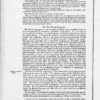
Matthew Jones, “On Nineteenth-Century Welsh Literacies, and the ‘Blue Book’ Education Reports of 1847”
This essay considers the 1847 Reports of the Commissioners of Inquiry into the State of Education in Wales, better known as the “Blue Books,” which alleged that Wales’s Welsh-speaking population was benighted, immoral, superstitious, and barbarous, and in need of English-language education. These factors were said to be compromising the country’s modernization while also, in more quiet ways, threatening British society more broadly. The Welsh language was the primary target, and it was deemed antiquated and unfit for commercial and imperial life. Through the Welsh language, the Blue Books also inveighed against Welsh motherhood, Wales’s increasing Nonconformity, and its recharged and growing literary culture. I place the Blue Books in a larger nineteenth-century Welsh context, focusing especially on how rising rates of literacy and religiosity across the country countered the Blue Books’ primary claims. I discuss with particular emphases the Welsh Calvinistic Methodist movement, the antiquarian movement, the revived eisteddfod literary festival, and the influences of Welsh women in Welsh society and as Welsh mothers. Furthermore, I argue that the Blue Books borrowed much colonialist rhetoric then in fashion that disparaged Irish, Indian, Chinese, and African people. With this in mind, the Blue Books fit in among contemporary colonial documents, and they construct the Welsh in similar manners to how other non-English populations were during this moment of Victorian Britain.
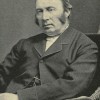
Kimberly J. Stern, “The Publication of John Pentland Mahaffy’s The Decay of Modern Preaching (1882)”
This contribution to BRANCH documents the historical and biographical conditions surrounding the publication of John Pentland Mahaffy’s controversial volume The Decay of Modern Preaching (1882). Although often deemed to be a secular or even heretical thinker, Mahaffy emerges here as a thoughtful scholar of religion standing at the crossroads of faith and reason. In the years preceding the publication of The Decay of Modern Preaching, Mahaffy witnessed a number of changes at Trinity College Dublin that threatened the principles he deemed essential both to good preaching and to intellectual culture more broadly. Mahaffy’s views on intellectual work and religion were mutually sustaining, a fact that helps to enrich our understanding of this important text, its troubled reception in the nineteenth century, and the evolving narrative of nineteenth-century faith.
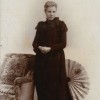
Carol Hanbery MacKay, “A Spiritual Materialist Turns Material Spiritualist: Annie Besant Rewrites Her Secularist Years, 1889 and 1891”
Examining the published texts of two lectures delivered by Annie Besant, “Why I Became a Theosophist” (4 and 11 August 1889) and “1875 to 1891: Fragment of Autobiography” (30 August 1891), this entry argues that they constitute a little-known bridge between her Secular and Theosophical years. Written during the interim between Besant’s only two full-length self-accountings, Autobiographical Sketches (1885) and An Autobiography (1893), the lectures provide the grounds for discovering her continuity as a spiritual materialist and a material spiritualist, thereby also bringing to the fore her effort to maintain an ongoing dialogue between science and religion.
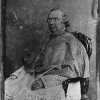
Miriam Burstein, “The ‘Papal Aggression’ Controversy, 1850-52”
This article provides an overview of the political, religious, and cultural response to the restoration of the Roman Catholic hierarchy in England. The Vatican’s decision to go ahead with this bureaucratic change was misunderstood in England, with immediate and unexpected consequences. Protestants across a wide range of denominations reacted harshly to the announcement, with repercussions not only for Catholics, but also for the Oxford Movement in the Church of England itself.
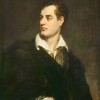
Jane Stabler, “Religious Liberty in the ‘Liberal,’ 1822-23”
A survey of the negative twentieth- and twenty-first-century critical reception of the Liberal; a summary of the history of the journal and a re-evaluation of the philosophical and political coherence of the journal, focusing on its defence of religious liberty and suggesting that religious free thought is a previously overlooked component in the politics of liberalism. The criticism of doctrinal rigidity and advocacy of different forms of religious toleration evident in the four issues of the Liberal support the claim that the journal forms a lucid and intelligible cultural intervention.

Laura Mooneyham White, “On Pusey’s Oxford Sermon on the Eucharist, 24 May 1843”
E. B. Pusey, one of the Oxford Movement’s most important figures, delivered a sermon on the Holy Eucharist to an Oxford audience of dons and students on 24 May 1843. Though not particularly controversial in its statements, the sermon was charged with heterodoxy—that is, heresy—and its author barred from preaching in the University for two years. The ensuing controversy constituted one of the more important battles of the late stages of the Oxford Movement (generally understood to have been underway between 1833 and 1845). Moreover, the controversy set the stage for the climax of the Movement in 1845, the defection to the Roman Catholic Church by the leader of the movement, Pusey’s fellow don and clergyman, John Henry Newman. This article contextualizes the scandal of Pusey’s sermon and punishment by providing a brief history of the Oxford Movement, especially its origins in response to the quiescence of the early nineteenth-century Anglican Church; it also explains the debates within the Church about the nature and proper practice of the sacrament of communion (Holy Eucharist). Last, the article argues that the official denunciation of Pusey’s sermon demonstrated both to members of the Movement and to the Anglican Establishment who opposed them that compromise between the two parties would be almost impossible to achieve.
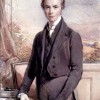
Barbara Charlesworth Gelpi, “14 July 1833: John Keble’s Assize Sermon, National Apostasy”
This essay outlines the personal interactions and political events preceding John Keble’s delivery of a sermon later entitled National Apostasy to the judges gathered at Oxford for the Assize Court as a way of understanding the sermon’s significance in relation to the Oxford Movement.

Christopher Lane, “On the Victorian Afterlife of the 1781 Sunday Observance Act”
Proposed in 1780 to “suppress” the rise of Dissenting and freethinking societies, the Sunday Observance Act was passed in 1781 and adopted across Britain that year. In seeking to encourage Sunday worship, the new law aimed to curb Sunday trading and to prevent the public on such days from visiting parks, museums, zoos, theaters, meeting-houses, and concert halls. The interest of this essay lies in the cultural effects of such legislation, as well as in the figure who proposed it, Bishop Beilby Porteus, and the freethinking philosopher, William Nicholson, who is said to have challenged Porteus and Britain’s episcopacy by detailing the law’s and the Bible’s inconsistencies. The pamphlet attributed to Nicholson, though its authorship remains contested, is called The Doubts of Infidels.
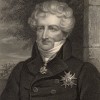
Martin Meisel, “On the Age of the Universe”
The Charles Darwin-inspired debate over the Age of the Earth that pitted contemporary Physics against the theory and practice of contemporary Geology was intimately tied to recent unsettling projections on the thermodynamic fate of the universe. The leading voices in the debate were William Thomson, later Lord Kelvin, and Thomas Henry Huxley, Darwin’s most able champion. The argument—resolved only in the next century—has exemplary value as an intractable dissonance between two vigorous and well established, but not entirely secure scientific disciplines. And its content laid some of the groundwork for the pessimism that qualified the cult of progress and the whiggish habits of cultural and material complacency towards the end of the century.

Bernard Lightman, “On Tyndall’s Belfast Address, 1874”
John Tyndall’s Belfast Address at the British Association for the Advancement of Science in 1874 touched off a heated controversy over his alleged materialism. His enemies expanded their criticism of his materialism to include Victorian scientific naturalists. An analysis of the Belfast Address and the controversy surrounding it provides insight into the status of Victorian scientific naturalism during the 1870s.
